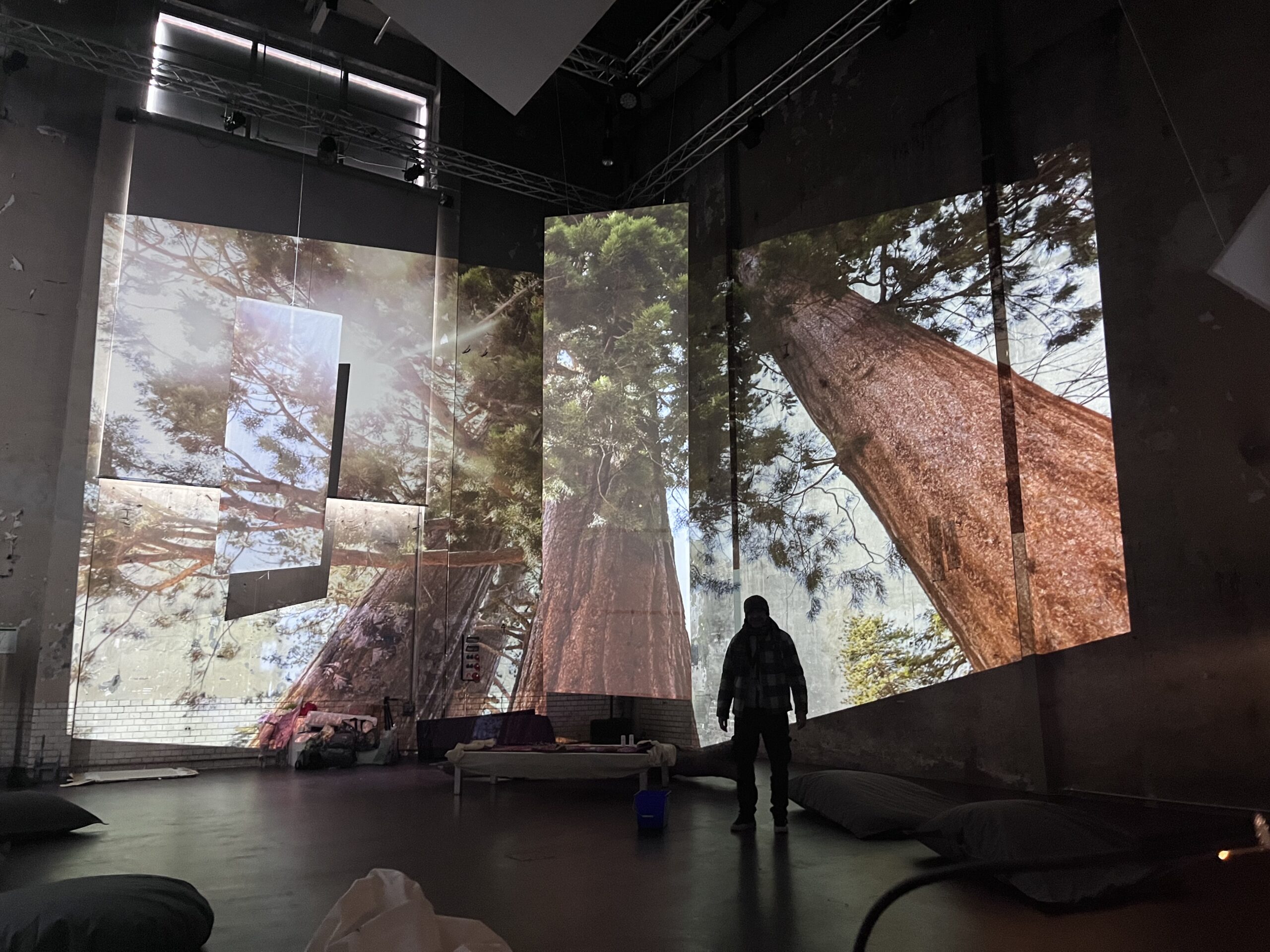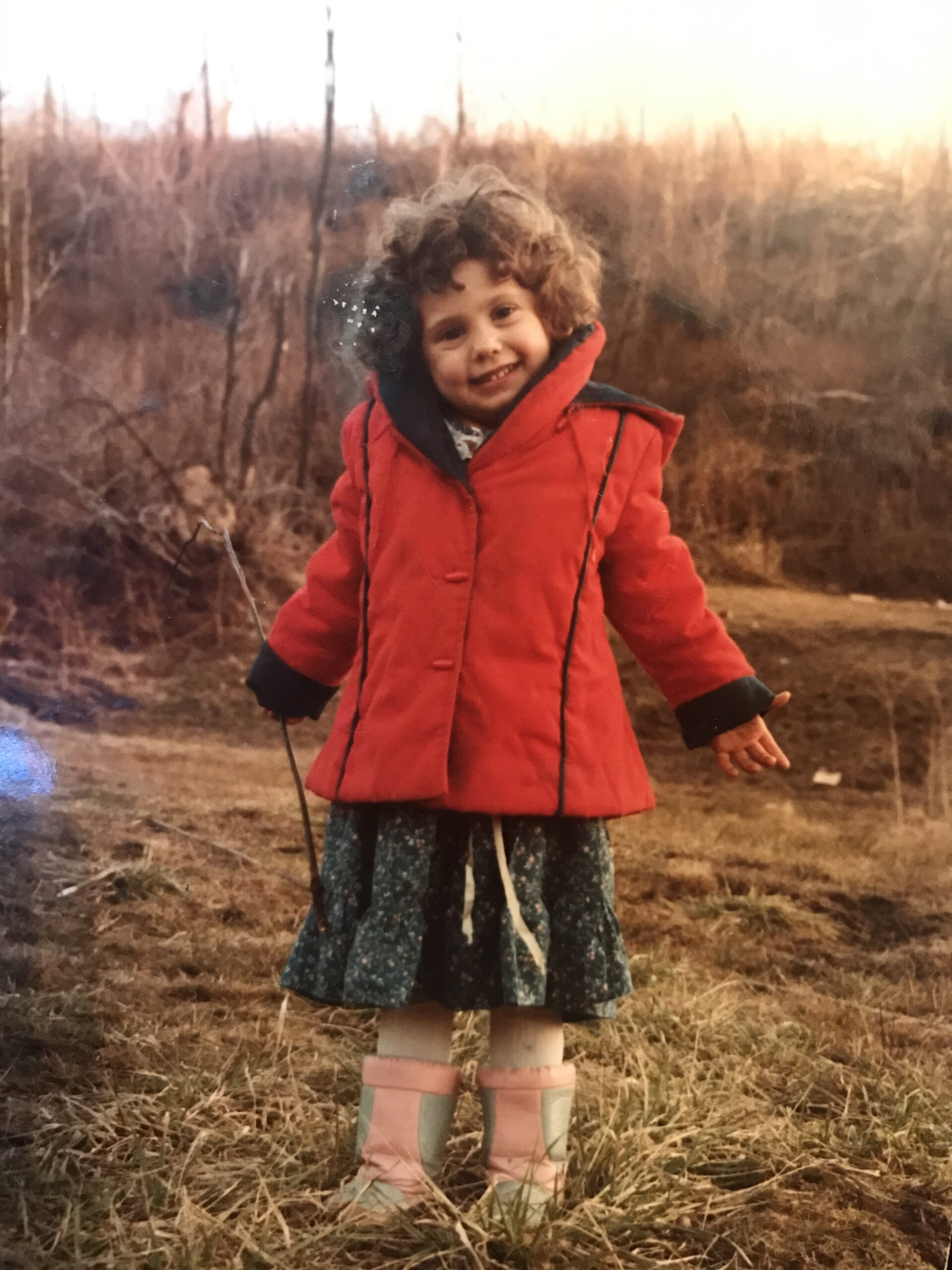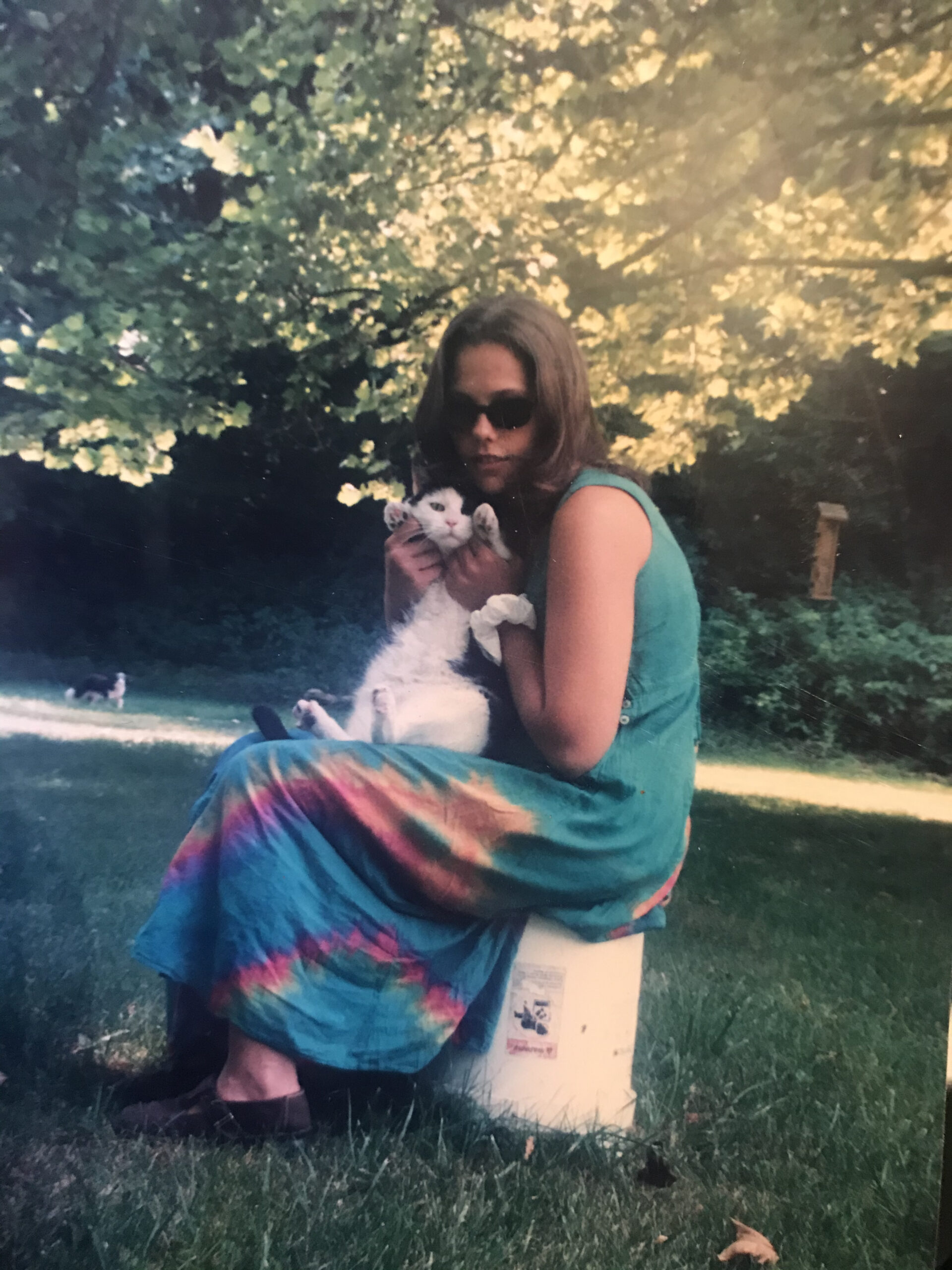Audience with a Tree
Photographer: Jana Cruder

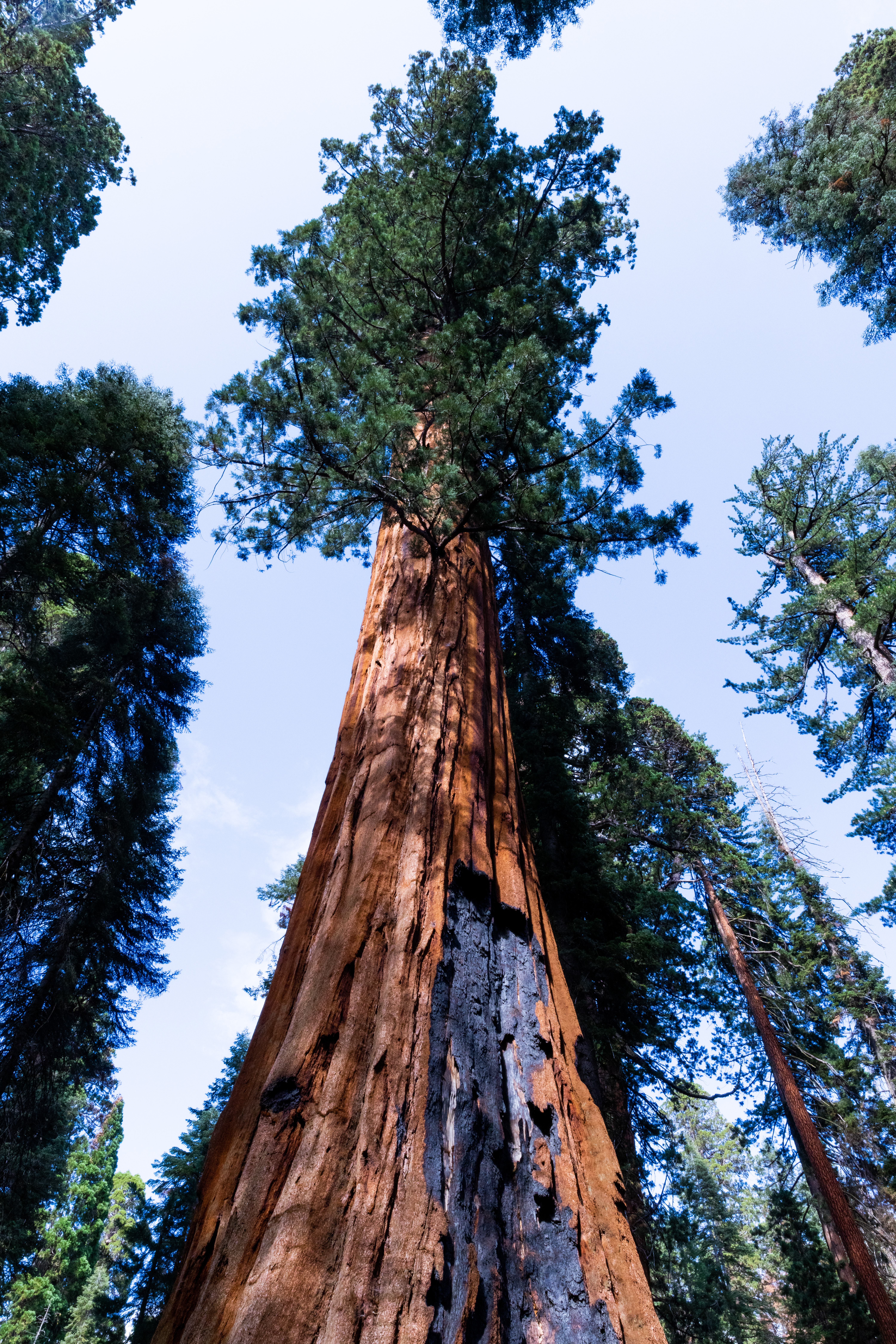 Heidi: How did your connection to trees as a nature based solution to climate change and human connectivity begin?
Heidi: How did your connection to trees as a nature based solution to climate change and human connectivity begin?
Jana: I’d like to ask the reader to suspend their known idea of the concept and words “Climate Change“. That is simply too big to grasp and leaves many feeling overwhelmed. The climate is constantly changing, it is the earth’s regulatory systems constantly seeking balance and self regulating. Rather, I want to encourage an update of terminology to “Environmental Degradation“ from multi-generational post industrialization. That way we can truly understand and start to shape the what, why and how.
I’ve always had a special affection for trees, as a child I grew up in the forests of western Pennsylvania, running endlessly through them, watching the bears, deers, turkey and building forts. We as a family spent most of our free time in the forest surrounding the home I grew up in.
In 2010 I went to Germany, that was the first time I witnessed a planted forest. I was on a train from Hamburg to Frankfurt and for what seemed like endless miles I could see straight down the lines of the forests swiftly passing by the window, these forests also void of other life, birds, deer, and other plants. It was confusing and then I realized all the forests here are planted. After that trip I did more research and learned about GMO forests and the less than 4% of old growth left in Europe at that time.
The inspiration for this project came in the summer of 2017 I was deep in a course learning about the ancient system of elemental theory Ayurveda. In this system of thought we are taught we are not separate from the earth that makes up our internal body systems. I learned that our lungs are the forests of our bodies and the forests are the lungs of the planet. Making this connection paved the way for the unfolding of this work. While attending the Spiritweavers Gathering, the founder Mea Woodruff had purchased and relocated the gathering to its permanent site amongst a towering collection of old growth cedars and redwoods. I had visited the Redwood forests before and always loved visiting Sequoia and never felt more alive then in the presence of those magnificent magical old growth trees. At the gathering I had the opportunity to meet and listen to Ayana Young speak about her passion for the forest and her then new podcast and project called “ For The Wild “. I was so inspired by Ayana and her vision for the Redwoods project she planted a spark in my spirit. The months following the gathering I listened to every episode she had at the time and dove deep into the challenges and stories of the Redwoods and Pacific Coastal first nations and forests. Later that fall I relocated from Topanga, CA to the northern Bay Area and landed in a community outside Sebastopol. I had pulled up in the driveway and left all my belongings, gear, and equipment in the car and went into my new room and fell asleep. Around 4am my new house-mate was pounding on my door telling us all we had to evacuate. I drove to the nearest ridgeline to witness a wall of flames about 10 miles wide making its way towards the house I just moved into. This fire would initiate a series of evacuations between Northern California and Southern California that spanned the next two years. After the devastation of the Santa Rosa, and Tubbs fires of 2017 I went out into the fire scorched forests and cities to document the devastation. I was never the same after those fires, it’s like my eyes opened for the first time to the magnitude of the threat to our forests and our old-growth forests and the important and intrinsic roles the old-growth natural forests play in the balancing of the earth’s climate. I was overcome with grief mixed with curiosity, and that is when I was inspired to make this image. It is a self portrait of me on a stump scorched after the fires.
 What was your first memory of a tree?
What was your first memory of a tree?
As a child, I grew up in the woods. In front of our home in Greensburg, PA are planted two giant Sycamore trees standing now well over 100ft tall and 10ft in diameter, they are about 80 years old. Did you know the Sycamore tree is full of drinkable sap. If you’re ever out of water and you see a Sycamore tree you’re in luck. These two trees have stood as pillars for me, the memory of them so strong and so present in my life. The first picture of me is 1986 in the woods near the lake behind our family home, the second was 1996. I’m sitting on a bucket holding my cat under that giant Sycamore.
Some of your work is based in spiritual practices and anthropomorphization of the tree, can you share more about this?
Nature is spiritual, for me I am at most alive in my being when I am in deep nature. Spend enough time in these places and you’ll understand the interconnectedness of it all. My spiritual fabric is a diverse mixture of philosophies and practices and part of what I bring to every aspect of my life. In my early 20’s I met and studied with a Navajo medicine man in New Mexico. He started to open me to the realms beyond this physical fabric. He introduced me to the Beauty Way and Red Road, an unfolding of honor that might take my entire lifetime to fully embody.
I anthropomorphize most everything, even as a child. Partially to create a window of engagement, the other to recognize all things as having life. It is centered around beliefs from Buddhist and also the Native American belief systems. To recognize all things as having life force, taking life force and that is to be respected and not wasted. These philosophies are hard to balance in a culture where consumerism, and economic gain outweigh the value of other than humans and the health of the environment.
What is your hope with the immersive work?
My latest immersive experience Audience With A Tree, it is my hope that I can reconnect people with the vast essence of these giant old growth forests. Bring about a moment of reflection and inspire reverence.
Have you ever known something so deeply as a truth in your heart, you just wait for the moment it unfolds into reality on this earth plane? That is how I felt as this project started to take shape, I knew I wanted to use my creative skills and talents for something bigger than me, it’s a walking prayer of mine. To be used, aligned and put into the right space and time for the elevation of these ideas to connect humans to nature at large. I had at the time two other large experiential fine art installs under my belt and trees seemed like that was my next focus for immersive experience. I read the book “ The Hidden Life Of Trees “, by Peter Wohlleben. I was also deep into the realms of plant medicine at the time and kundalini yoga, all practices that open one up to other possibilities and shifting ways of thinking. It was on a medicine journey when I started hearing the root networks of the trees and seeing their interconnected being-ness, they even started coming into my dreams off the medicine. It felt as if I was being summoned. I listened and planned a trip to the giant old growth of Redwoods state park – visiting the Grandmother trees in the Redwood state forest all while documenting and listening deeply. My first trip was a scouting trip, talking to rangers and locals, learning so much about the conflicting agendas for the forest industry, BLM and the state and national park systems. It was on that trip I also learned about the permits auctioned off and some given for free to private enterprise to access state and national lands to harvest resources. I left that trip amped and angry. I then returned to go deeper into the woods with my partner Zebu, he himself is a producer and artist. I was sure he’d understand the need to sit at the feet of the Grandmother Trees and listen. He and I took some mushrooms and sat on that beach surrounded by towering old growth Redwoods, that was where I had my Audience With A Tree. I prayed, cried and asked for forgiveness, I then asked for inspiration for what is needed. What can I do? It was quiet for a few moments when I heard loudly the word “ Reverence “ inspire reverence.
As for the mediums, and progression of my craft, I feel I outgrew the label of “ Photographer “ many years ago, when I was learning film and started directing more commercial multi media advertising shoots and branded content creation. I’m identifying now as a multimedia artist and creative director who uses photography and video to create experiences I and my teams then document. For my fine-art experience Audience With A Tree, I used both photography I captured in Sequoia National Forest before and after the devastating fires of 2021 as well as images from Redwood National Forest and other Redwood groves along the pacific coast highway. I also used video I captured mixed in with some stock images to create an immersive forest experience.
How have you tried to communicate scale and majesty with your art?
Scale is very important to me, when I created Natural Plasticity I remember when the idea came it was so simple, I wanted to make these pieces so big the public couldn’t ignore them. That’s how big plastic felt to me, I wanted to create a disruption and for that project scale helped convey that. I’m inspired by many great artists that have preceded me using scale to make bold statements. In my practice I’m not afraid of scale and I use it to convey feeling. These things are very big for me and visual scale is a way to communicate that. For Audience With A Tree scale is a poignant and impactful way to convey scale of the old-growth. For the Berlin installation we chalked a 30ft in diameter Giant Sequoia stump print. This not only reflects the actual size of the Sequoias but also stands conceptually for the magnitude of their threat and to call attention to the honoring of the trees that once stood in these very spaces. Being in California and spending time with these tree beings, I took for granted the opportunity to be in their presence. I assumed others around the world knew about them and how big they are. While at the Berlin install I remember standing with someone when they made the connection to the scale of the stump print and the projections inside the exhibition. They couldn’t believe it, they said to see them in a picture then to stand amongst the imprint of scale was monumental. There was a moment of recognition that I think could not have been had with just an image. In future installs I envision several of these stump prints making their ways through the city and leading up to the install sites, perhaps honoring various fallen old growth.

Your first proof of concept installation was in Berlin, an industrial concrete environment, are you always planning on installing in cities where trees once stood?
In 2016 I created my install Way Of The Modern Man, this got me recognition in the Vice Creators Project. From that article about a year later I got an email in my in-box from NY/Berlin based architect Umberto Freddi. He simply said, my work was brilliant and that he wanted to collaborate in the future. Later that year when I was in Berlin on a photo assignment, Umberto and I met over coffee and he asked what I was interested in and working on next. I said Trees, I wanted to bring the vast essence of our old growth to dense urban environments to remind people they exist and that we need them. I shared with him early ideas of what this experience could look like and he took out his sketch book and started drawing. Below is that first sketch of trees and scale. We kept in touch moving the vision forward over the next many years, applying for funding, and fine tuning the idea. The vision for me started so big and then finally though distillation and process it was able to be deduced to its essence. To the elements of impact. That is what I shaped and brought to life with the help of Umberto, Ufer Studios the PSR Kollective and The Foundation For Contemporary Arts in NY.
At the moment I’m envisioning this to be installed in dense urban environments and available to the public to come and sit in Audience. Installing into cities is ideal for the concept. The contrast of gray, urban, concrete is needed for the impact of the work. In Berlin the contrast was incredible, we were in a very industrial and concrete part of the city. To have visitors come into a space where it was warm, smelled like the redwoods, with a towering canopy of nature and nature sounds provided a refuge from the hustle and bustle of the city. It was a welcomed reminder and reset space.


What tools did you give the audience to honor the trees?
I don’t want to beat people over the head with fear, the mainstream media and political and corporate agendas do a good job at that already. I’m also not approaching this challenge we face as humanity with fear. I’m most interested in opening a curious and contemplative space of self reflection. Opening a welcoming safe space for different points of view where people can come and touch into these conversations without guilt and fear. This is a big conversation, it’s a topic we’re all thinking about, affected by and the elephant in the room.
My intention is simple, to inspire reverence. To do that I created a sacred and visually interesting space. I pulled upon the idea that in times past people would bring grievances to the attention of the Queen by requesting an Audience. In Audience With A Tree its almost a reversed request, the trees are asking the public to come and sit in audience with them and learn and listen for answers. The immersive experience is layers of projections towering above with scents of redwood and cedar in the moist air coupled with the “ Voice Of The Forest “ a guided meditation from the Mother Tree, she brings people into relationship with the understanding of how important mother trees are to the balance of the forest ecosystems and their roles in the forest hierarchy. When we take these mother trees aka old growth we can permanently alter and scar the health of the entire forest network. I also brought into this experience an altar. I was very inspired by the great altars to the memory of loved ones at the San Francisco Day of the Dead, also known as Da de los Muertos. I wanted to create an altar for trees, a space to bring our grievances and concerns about the environmental destruction and changes we are experiencing as a collective and listen deeply for answers. On that altar I placed sacred items, sage, palo santo, crystals, sacred mala beads, flowers in honor amongst the news clippings about old-growth deforestation, clearcutting for lithium, how governments are selling resources to private companies and the impact of deforestation on our first nation peoples globally. I worked with photographer Mike Graeme to present some of his before and after images of the Giant Cedars and the devastation of Fairy Creek, Cayuse wilderness of British Columbia. I witnessed people come to the altar, and sit in reflection, look around at the projections and then back to the altar. It was a gentle and poignant way to share the why. People wrote messages to the trees, offered a candle and some even a prayer. It was so beautiful to provide a space for reflection and reverence.
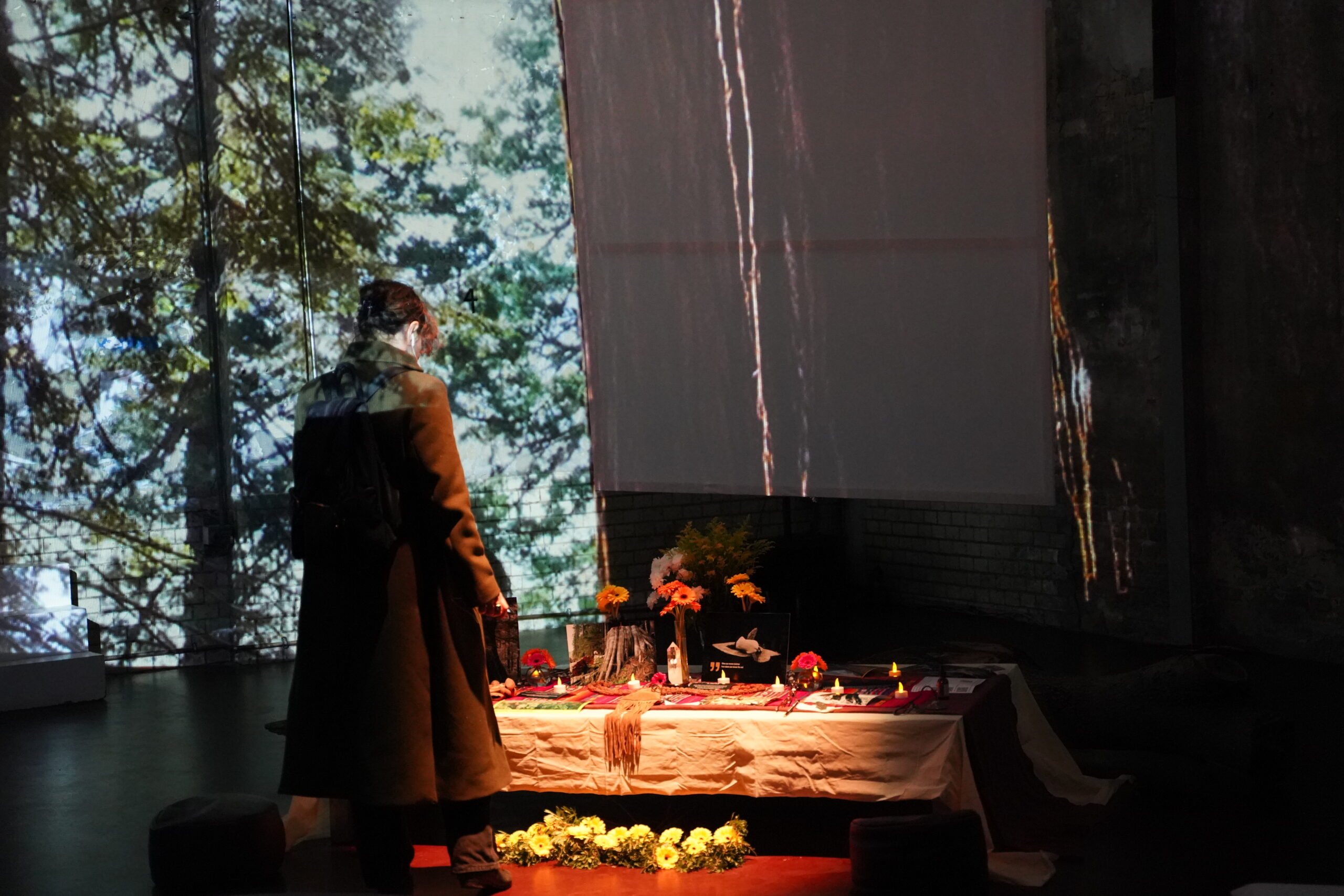
How long is each tree portrait?
The experience is open and rather fluid, the guided meditation lasts about 17 minutes depending on which language it is presented in and the viewers are then invited to sit in the space and reflect. Some rest, on the giant bean bags on the floor listening to the forest soundtrack, some visit the altar. Overall I’d say the average visitor spends about 30 minutes to 1hr in the experience.
What calls you to a specific tree or grove?
It is an absolutely combination of heart and my eyes. Sometimes they come in dreams, or messages. I’ll see something, read something, learn about a group of trees and know I want to go visit them. It all depends where I am and where I’m collecting images, films and sounds. Sometimes I’ll be driving and see them and immediately have to pull over to visit them. Other times I search them out talking to rangers and locals to find places not often found by everyone. So far I’ve visited many old growth groves in California, Oregon and Pennsylvania as well as the Amazon in Peru. It is a big vision for this work to continue and I hope to visit more pockets of old growth on the planet before they are gone, especially the Baobab old growth in Africa.
